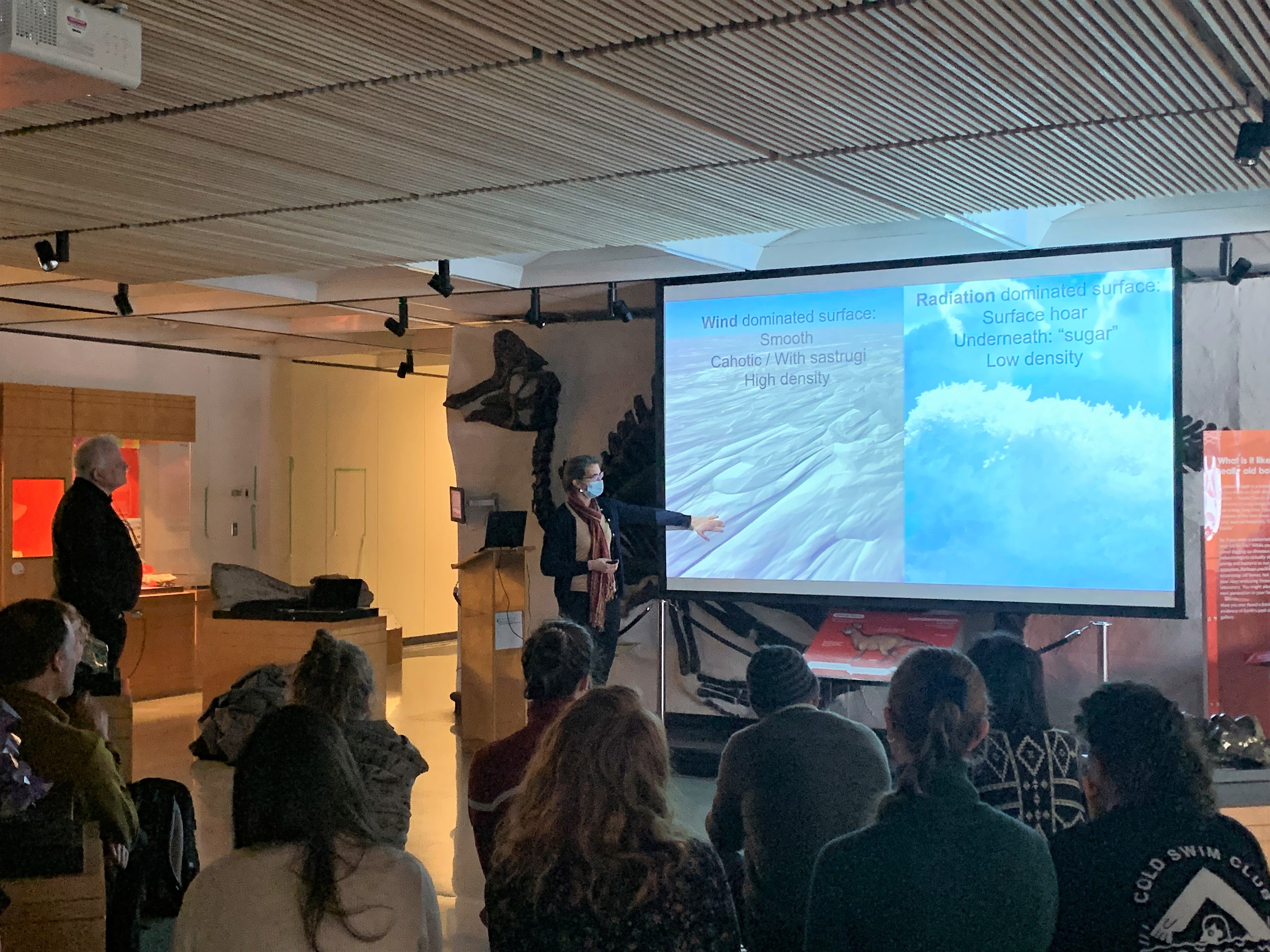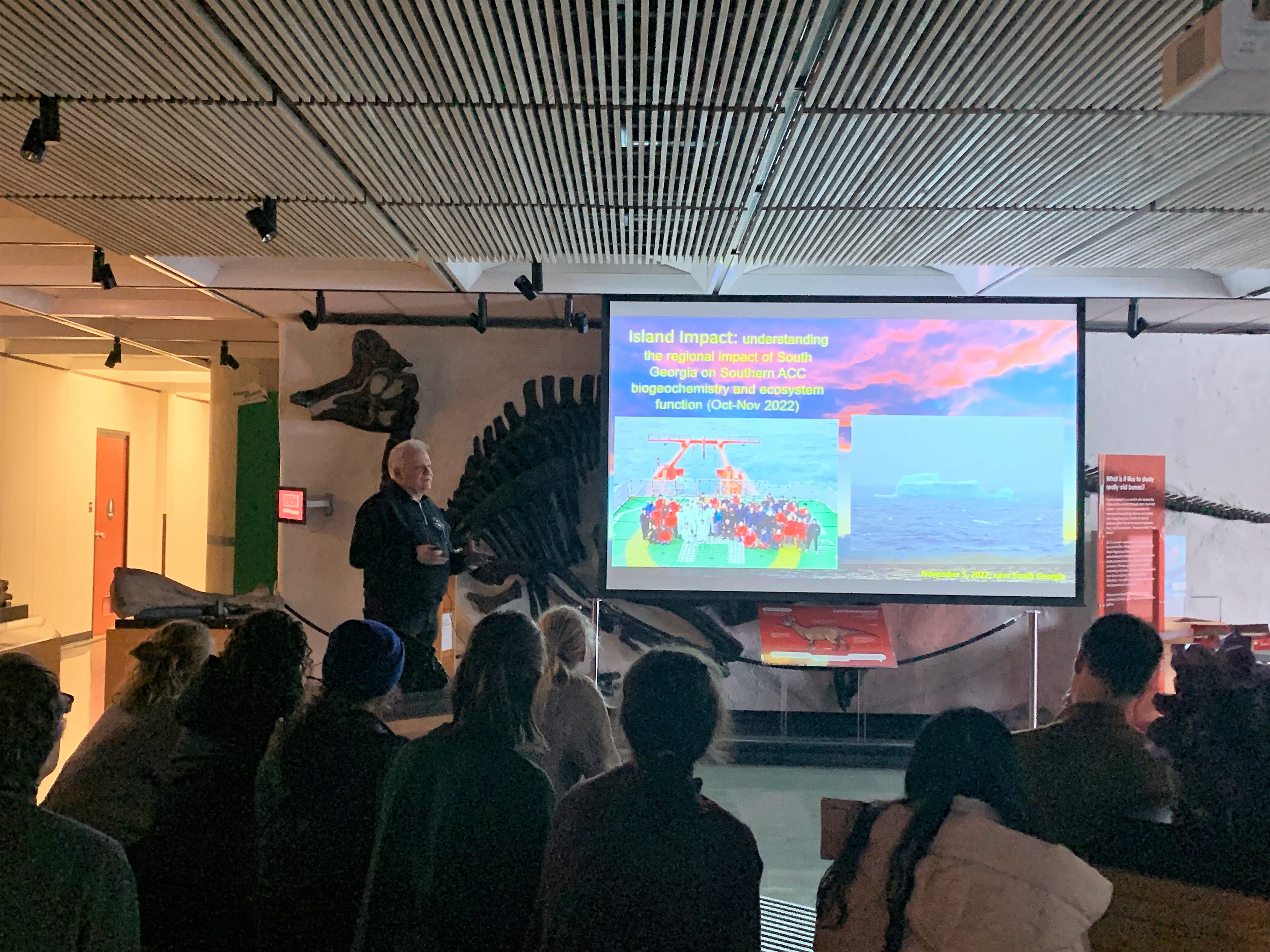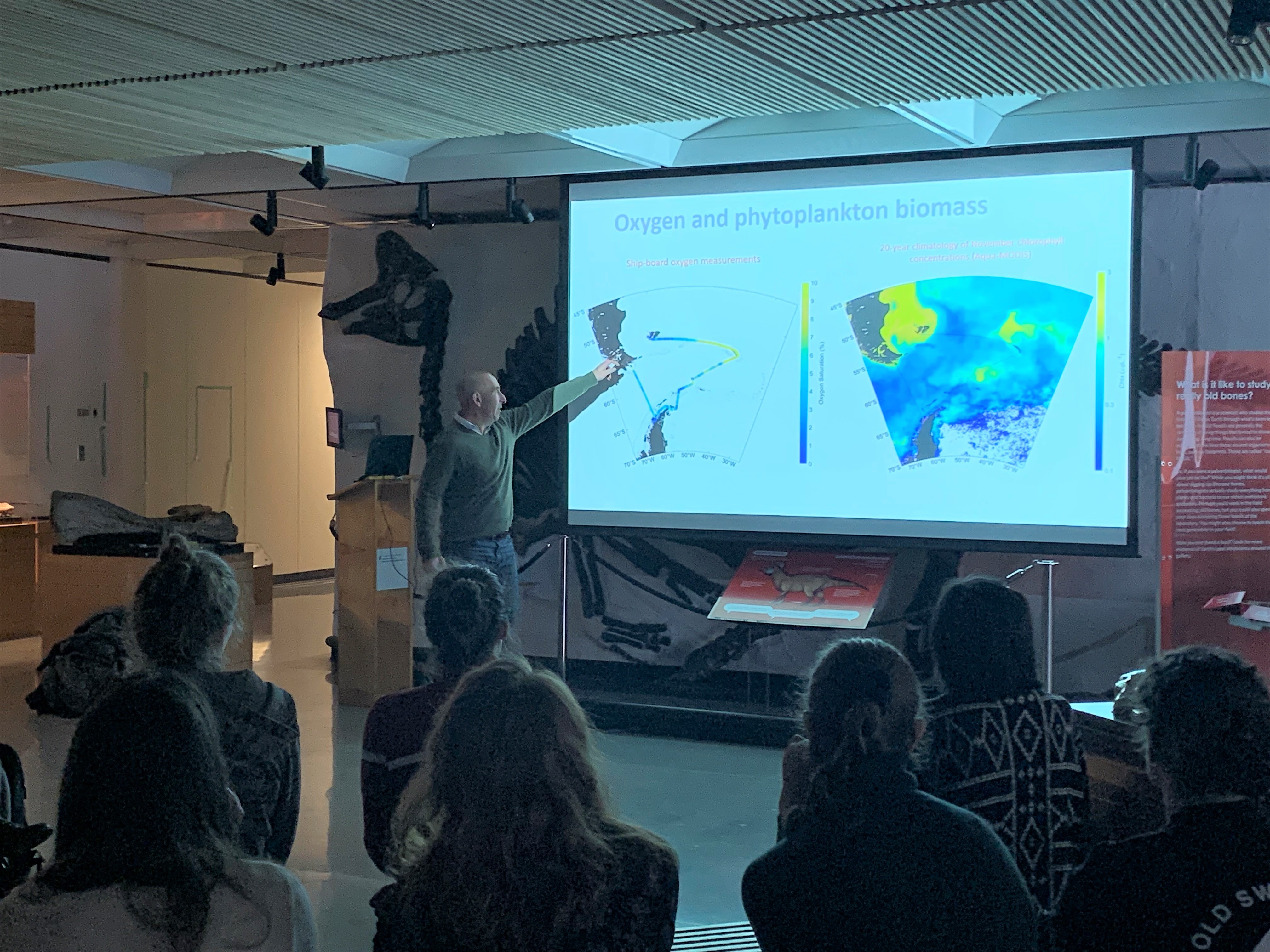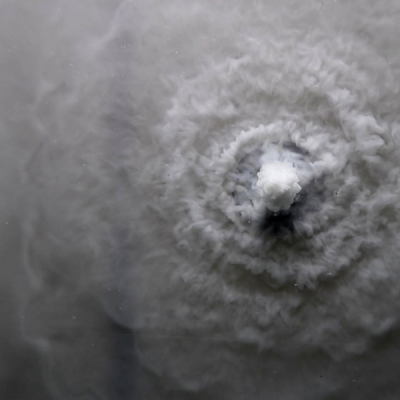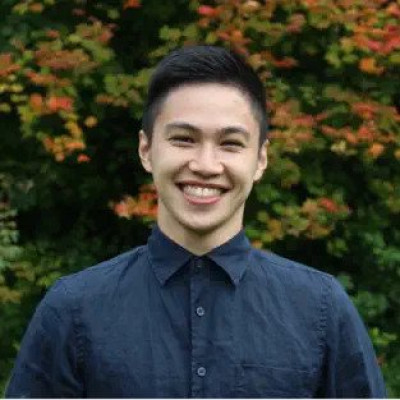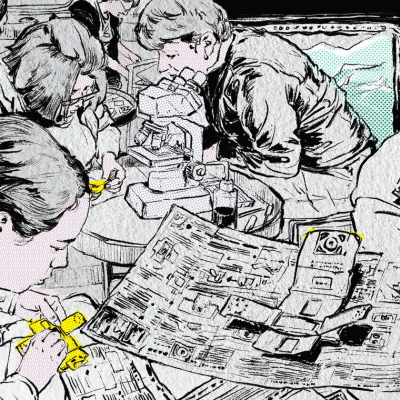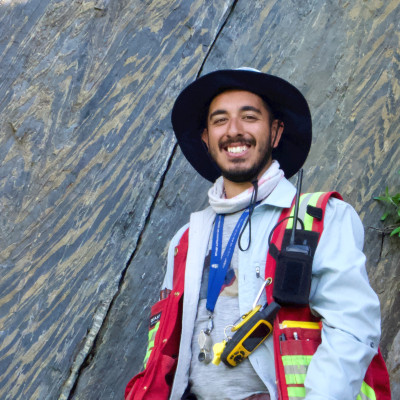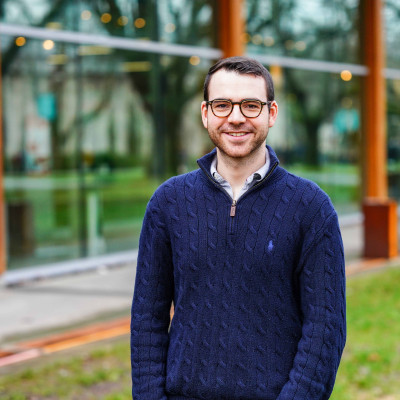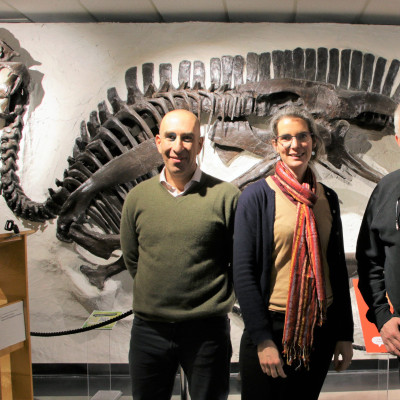News
Stay up-to-date with what's happening in EOAS
Study re-evaluates hazards and climate impacts of massive underwater volcanic eruptions
Material left on the seafloor by bronze-age underwater volcanic eruptions is helping researchers better understand the size, hazards and climate impact of their parent eruptions, according to new research from the University of British Columbia.
Roughly 3,600 years ago, the eruption of a semi-submerged volcano in the southern Aegean Sea devastated the island of Santorini, injecting ash, rocks and gas into the atmosphere and depositing kilometres of sediment in terraces on the seafloor.
The catastrophic eruption, and others like it, have traditionally been associated with abrupt climate shifts. But the minor climate impacts of more recent underwater volcanic eruptions, like that of Hunga Tonga-Hunga Ha’apai in 2022, have put that theory in doubt.
Now a multi-year study of ancient Santorini volcano deposits is unravelling the nature of these massive caldera-forming eruptions, and providing new clues as to how future eruptions might impact Earth’s climate.
During massive eruptions, volcanic eruption columns pass through shallow seas as jets of ash, rocks and gases that rise tens of kilometres into the atmosphere. But exactly how, and how much, of that material is then delivered to the sea surface or ground has remained unclear.
“We’ve proved the architecture of volcanic deposits in subaerial and submarine settings can be used to quantitatively constrain the dynamics of the eruption that occurred there, including the vent source and environmental conditions,” said University of British Columbia (UBC) researcher Dr. Johan Gilchrist, lead author the study published in Nature Geoscience (scroll down to watch our interview with Dr. Gilchrist).
“The study also provides crucial lower bounds on eruption strength, jet heights and frequencies and sizes of the sedimentation waves linked to terraced deposits. That will help us predict the evolution of hazards during these caldera-forming eruptions and understand the surprisingly small climate impact of similar events.”
With UBC Earth and planetary scientist Dr. Mark Jellinek, Dr. Gilchrist analyzed the concentric terraces that remain around the Santorini caldera—historically called the Minoan eruption. They discovered that the terrace widths decrease with increasing distance from the vent, and slope backwards up towards the caldera wall, consistent with other terraced caldera deposits. The terraces near the caldera wall are also much broader than those found in caldera from purely submarine or subaerial eruptions.
Dr. Gilchrist had a hunch that sedimentation waves collapsing periodically around the volcanic jet spread where they impacted the water surface during shallow submarine eruptions.
To verify the hypothesis, the researchers injected particles into shallow water layers to mimic the submarine Minoan eruption. The experiments proved the descending sedimentation waves caused by shallow water eruptions can impact and spread at the sea surface to create tsunamis and also scour the seafloor, depending on the eruption strength and water depth.
The terraced deposits left a fingerprint outlining what happened during the eruption, the size of the sedimentation waves, and how they interacted with the water and seafloor.
“The limits this study has uncovered will guide a next generation of hydrovolcanic climate models aimed at understanding how the mass partitioning properties of eruptions like Hunga Tonga-Hunga Ha’apai—as well as the largest and most impressive volcanic phenomena in the geological record—minimize their effects on climate change,” said Dr. Jellinek.
Added Dr. Gert Lube, a volcanologist with Massey University not involved in the study: "For the case of three submarine caldera-forming eruptions, this study provides the first direct relationships between the deposit architecture and parental eruption conditions. The results of this study are intriguing and could possibly be extended to non-marine, caldera-forming and smaller eruption events.”
Read the paper here: Submarine terraced deposits linked to periodic collapse of caldera-forming eruption columns
Watch our interview with Dr. Johan Gilchrist:
Meet Dave Daquioag - Research Technician
Dave Daquioag is a research technician for the Pacific Centre for Isotopic and Geochemical Research at the University of British Columbia where he assists students and researchers with isotopic analysis of their samples. His main tasks include the separation and purification of radiogenic isotopes from whole rock or mineral samples using ion exchange column chemistry and the analysis of Sr isotopes with the Nu Instruments Thermal Ionization Mass Spectrometer (Nu TIMS). He completed his BSc in chemistry at UBC and has past experience working in different industrial lab settings from characterizing surfactant material to analyzing potash minerals.
A story from Antarctica
Professor Philippe Tortell, Head of Earth, Ocean and Atmospheric Sciences, told us a wonderful story from his trip to Antarctica. It is a story about the ocean, curiosity, and science. Watch the video below to learn about it!
Here's another video about their trip to Antarctica: https://youtu.be/UDAsGSvsOAU
PhD student Darius Kamal selected as a recipient of SRK Canada’s Graduate Scholarship
Darius Kamal, a Ph.D. student under the supervision of Ken Hickey at EOAS, has been selected as a recipient of SRK Canada’s Graduate Scholarship for the 2022/23 academic year. This scholarship was established to encourage and support post-graduate studies in fields related to the mining industry. Applicants are evaluated based on their academic achievement, industry experience and the relevance of their studies to the mining industry.
Darius’ Ph.D. research aims to establish how rock deformation during crustal shortening events impacts the distribution, preservation, and grade of sediment-hosted massive sulfide (SHMS) Zn-Pb deposits. His research is focused on the SHMS deposits at Howard’s Pass and Macmillan Pass in eastern Yukon. Darius’s study integrates lithostratigraphic and structural mapping with kinematic and microstructural analysis, U-Pb carbonate dating of veins, whole rock geochemistry, mineral chemistry, and micro-XRF, SEM, and EBSD mapping. Darius’s research will make a significant contribution not only to the structural development of the Selwyn basin and the tectonic evolution of the Canadian cordillera, but also to the mineral system science of SHMS deposits.
New in EOAS: Hal Bradbury—Assistant Professor in Chemical Oceanography
We are pleased to welcome Dr. Hal Bradbury, who started his position as Assistant Professor at EOAS this January. Scroll down to watch our interview with Dr. Bradbury!
Q: Would you like to tell us a bit about yourself?
HB: I'm a chemical oceanographer and technically, a marine isotope biogeochemist. I did a geology-based undergraduate program in Earth Sciences at Imperial College London. In my Master’s study, I focused on carbonate sedimentology by looking at stable isotopes in carbonates and phosphates. During my Ph.D. at the University of Cambridge, I used a range of isotope systems, including calcium isotopes, to look at the global carbon cycle and started to get interested in the biogeochemistry side—the interaction between life and the carbon cycle itself. I worked on ocean sediments and how they interact with the overlying ocean, and I continued developing that area during my postdoc including utilising numerical techniques, such as reactive transport modelling and machine learning, along with field and lab studies. I am interested in finding out how we can use isotope tracers and combine them with modelling to learn more about modern and ancient Earth processes.
Q: What is your favourite part when working on these research topics?
HB: I like developing research tools and finding new applications. One of the greatest things about specializing in calcium isotopes in my Ph.D. was that I could apply it in a whole range of different environments. I have applied it in lake and marine sediments, hydrothermal systems, as well as microbial cultivation-related projects. I think if you have a good understanding of a research tool, you can apply it to many areas which can lead to interesting insights and research projects.
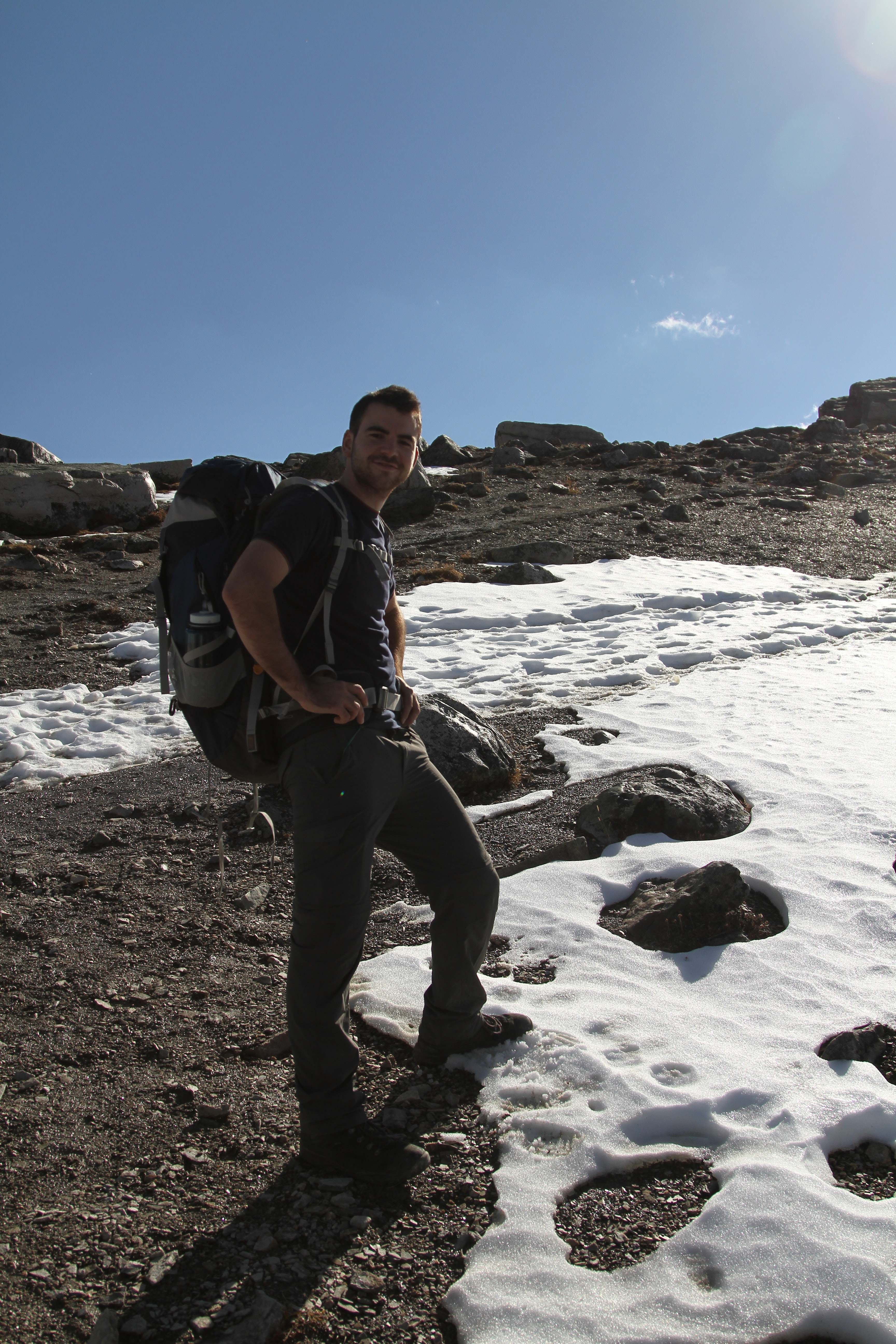
Q: What do you consider your major contributions or accomplishments so far?
HB: When I started my Ph.D., I got to set up the lab at Cambridge to measure calcium isotopes, including setting up an HPIC (high-performance ion chromatography) to separate calcium and a TIMS (thermal ionisation mass spectrometer) to measure the isotope ratios. These experiences not only gave me an understanding of the back-end workings of how these measurements are made, but also led to lots of collaborations. I got to work with researchers from many institutions to solve a variety of problems, which opened my eyes to how collaborative science can be. My other major accomplishment would be getting funding and positions. I was very fortunate to get a four-year NERC Independent Research Fellowship straight out of my Ph.D., which was an invaluable opportunity to explore my research interests and decide on the direction I wanted to go. Also, getting this position at EOAS is exciting as it allows me to continue developing my research and teaching interests.
Q: What research topics are you excited about now?
HB: I’m excited about carbon cycling in the sediments and how they link to the overlying ocean. We understand that the carbon cycle is key to controlling the Earth’s climate, and that the main sink of carbon from the surface to solid earth is in the oceans, where it is deposited as carbonate minerals and inorganic carbon on the seafloor. What I'm interested in is what happens to this carbon once it's deposited: it could either just be preserved as it was deposited, or it can be broken down by a series of different microbial reactions. These interactions control what form the carbon is stored in and whether it is released back into the ocean. There are also lots of other elements involved in these processes, which can be either released or consumed, influencing geochemical cycles on a global scale.
I want to use my expertise in stable isotope tracers to look at carbonate mineral precipitation and dissolution. I will also use carbon and oxygen isotopes to look at the organic side of things and magnesium isotopes to look at silicate reactions occurring in the sediments. I will also use numerical modelling to fully understand the processes controlling the isotope signals.
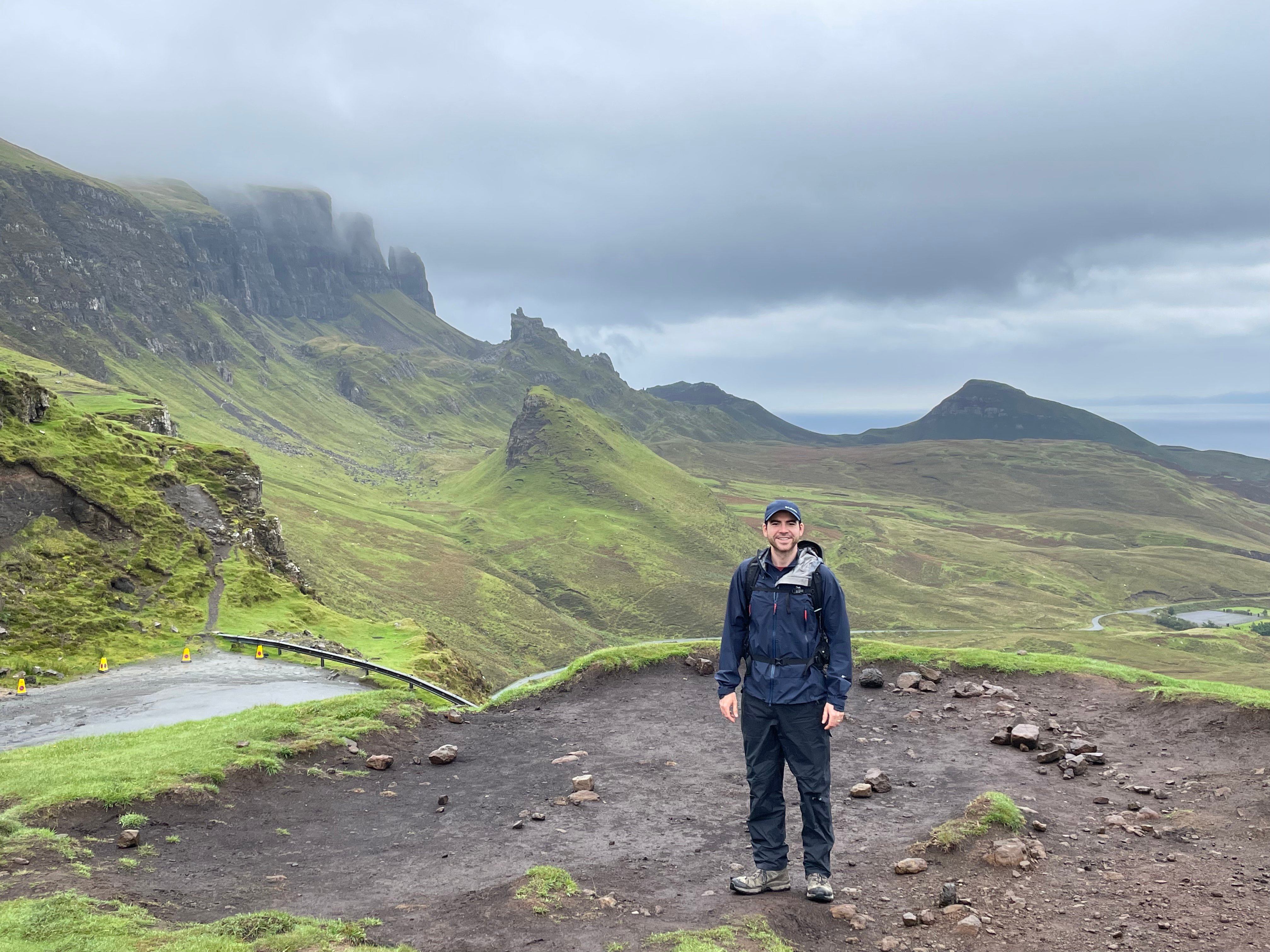
Q: What topics do you enjoy teaching?
HB: I enjoy teaching chemical oceanography and a broad range of earth science. I am going to teach Introductory Oceanography in September and Chemical Oceanography and Marine Geochemistry in January. By understanding the chemistry of the oceans, you get exposed to important questions including how the climate works today, and how ocean sediment can be used to reconstruct the climate of the past.
I also really enjoy teaching geology in the field. I've done quite a lot of field teaching and I recently went to Bamfield to observe the course Methods in Oceanography in preparation for teaching it in the future. I think students get a chance to see the scale of geological and oceanographic processes in the field, which can be hard to grasp in lecture-based learning. Additionally, spending quality time with lecturers, researchers, and experts will provide the students with different experiences from a purely lecture-based course.
Q: What are the most important things you hope students can come away with in your class?
HB: The most important thing I hope the students come away with from my courses is the interconnectivity between different areas of study. If someone wants to understand past conditions of the Earth, they need to learn about what happened in the past ocean, but also what happened in the atmosphere and sediments. I hope that over the course of a degree, students can understand how different modules are linked with each other and be able to piece together an overall picture of the global environment.
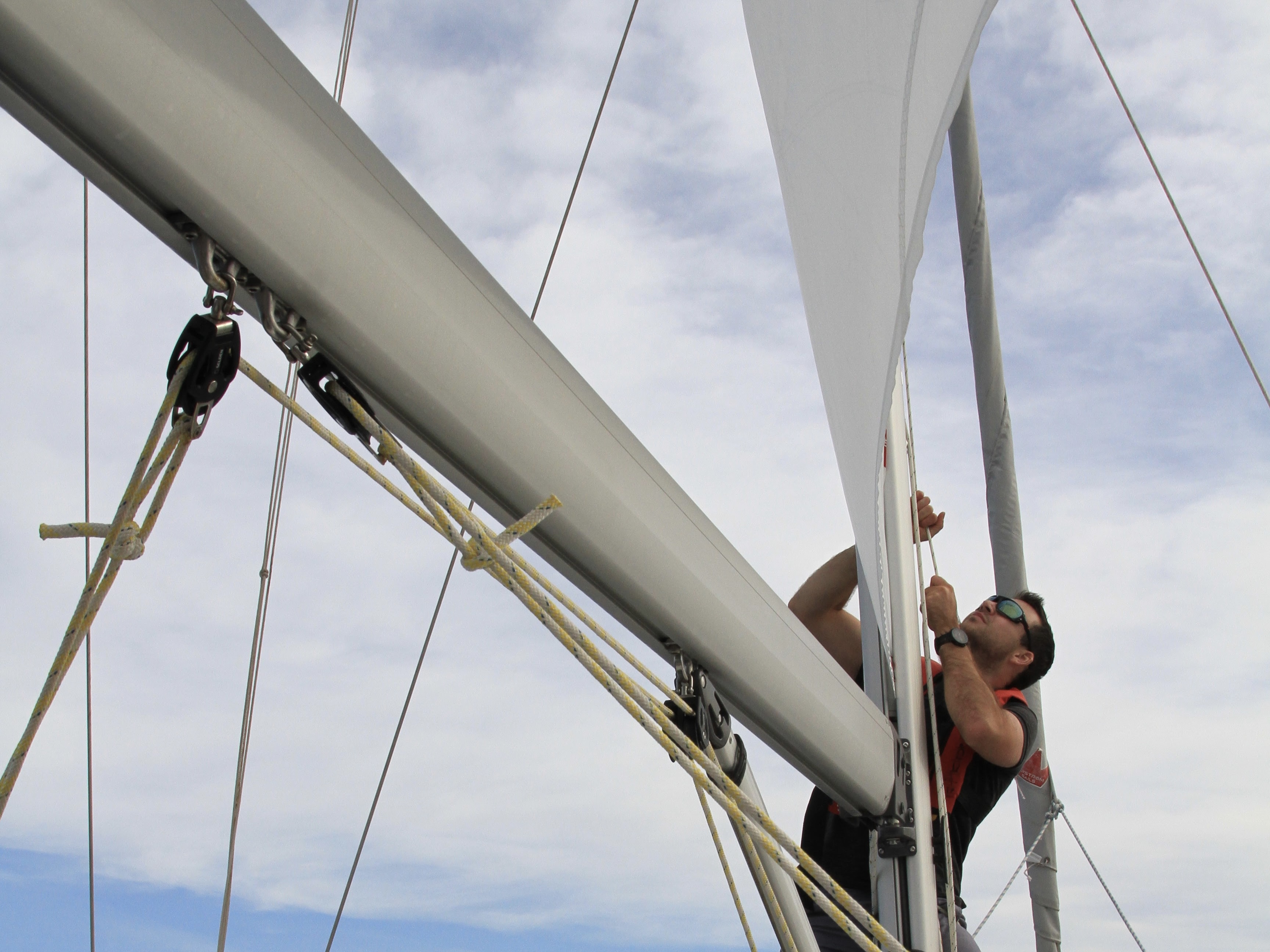
Q: What drives you to EOAS?
HB: What I really like about EOAS is how interdisciplinary the department is. There are researchers in many different areas and lots of opportunities for great collaborations. I can see myself collaborating across the whole department and working with oceanographers, isotope geochemists, geologists, and numerical modellers. Also, I like the ability to conduct oceanographic fieldwork around here, like in the Strait of Georgia and at Bamfield, as well as the great lab facilities including the PCIGR. I also value the combined focus on both excellent research and new teaching methods, such as the great support provided by the department for undergraduate and graduate teaching.
Q: What are your short-term and long-term goals at EOAS?
HB: My short-term goal is to set up the lab with a range of isotopes, get to know the department, and start looking for research students. In the longer term, I look forward to building up my research team and getting into my teaching here.
Q: Would you like to share some fun facts about yourself?
HB: I like being outdoors. One of the great things about coming here is the amazing scenery, with the mountain backdrop behind the city and I am really looking forward to going out camping and hiking in some of the wilder parts of BC and up into the Rockies. I’ve previously spent a month camping in the Rockies and some of the national parks there, like Jasper and Yoho. I also enjoy being out on the water, both for fun and for work. I have done a lot of rowing, sailing and a bit of kayaking, so I look forward to seeing some of the amazing coastlines around here and exploring the water.
EOAS colloquium: Fresh bites of Antarctic field work
Last Wednesday, the department colloquium had a special program on "Fresh bites of Antarctic field work". EOAS faculty members Anais Orsi, Evgeny Pakhomov, and Philippe Tortell presented their expeditions in the Antarctic in the last few months and Christian Schoof introduced the potential of Canada’s Antarctic program.
Dr. Pakhomov led a team to study the influence of Salpa thompsoni, a gelatinous zooplankton that partakes in one of the largest migrations on Earth, on the marine carbon cycle. Dr. Orsi travelled to some of the coldest and windiest places on Earth to investigate how strong winds shape Antarctic ice sheets and collected million-year-old ice cores to study the record of Earth’s climate. Dr. Tortell boarded an alumni cruise as a study leader to conduct oceanographic research and deliver science lectures focusing on interactions between the Southern Ocean and Earth’s climate.
Visit this one-stop page to watch our interview with the scientists and learn more about their research in the Antarctic: https://www.eoas.ubc.ca/news-events/news/1667545200
